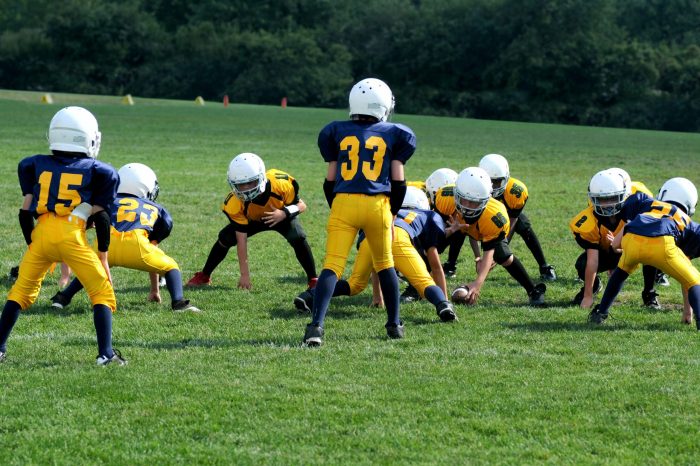
Sports can be highly beneficial to your little one as they grow up. Healthy competition can teach them the importance of following rules, working together, and playing fair. However, many sports are inherently dangerous and it is our job as parents to help guide our children away from the more dangerous sports if we are able.
While it’s perfectly fine to be cautious and concerned for your child’s wellbeing as they begin to navigate the world of competitive sports, it’s also important to balance that concern with your child’s need for independence.
If your child is ready to start their first athletic journey, here are some useful tips for helping them choose a safer sport to enjoy.
Read Next | Looking Ahead to Prevent Sports Injuries
Making an Informed Decision
Overall, most of us know that sports are a great opportunity for children to learn valuable lessons such as good sportsmanship and how to take constructive criticism. It also helps them stay physically active and gives them plenty of short-term goals to continuously work towards. Moreover, sports are also a great avenue to getting a college scholarship later in life.
It’s important to sit down with your child and explain the hazards and risks that come with certain sports. Whether you let them create a pros and cons list of the sport they’re interested in or simply discuss the top five most dangerous sports with them and why it might be a good idea to avoid them, helping them to decide the sport that is the best fit is a good idea. Currently, the list of most dangerous sports for kids includes:
- Football: Potential risks as a football player include brain damage, sprains, bruises, fractures, dislocations, and concussions.
- Basketball: Despite being a fairly low-contact sport, basketball players wear little protective gear and can experience serious dental, ankle, and knee injuries.
- Soccer: Soccer games can sometimes result in contact injuries such as cuts, bruises, fractures, sprains, concussions, or an accidental collision between players.
- Baseball/Softball: Some of the most common baseball and softball injuries are sprains and strains. These injuries can come from repeated use of the muscles used for throwing, catching, or hitting the ball, as well as taking tight corners around bases at high running speeds.
- Gymnastics/Cheerleading: Physically, cheerleading and gymnastics can lead to sprains and strains and more serious injuries can include fractures, dislocations, or even concussions. There have also been reports from former gymnasts of the pressures from coaches, peers, and the sport’s culture that can lead to the adoption of unhealthy and unrealistic body ideals.
Of course, resist the urge to be completely discouraging and allow them to make their own well-informed decision. Even if they ultimately decide on a more accident-prone sport such as cheerleading or soccer, they will at least be aware of the risks and can be a more conscious player.
Read Next | Kids and Sports: Bench the Stench
Prevention is Key
Just because a sport is particularly high-risk for injury doesn’t mean that you should completely prohibit your children from playing. Every day we take risks — getting into our cars and driving to work, walking and texting at the same time, or enjoying a rare steak. Instead of completely banning them from participating in something they’re interested in, teach them the importance of prioritizing their safety while playing and having fun.
Kids often feel like they are invincible and nothing can hurt them, and while they can and do bounce back from things that would absolutely hurt an adult, sports injuries are serious and can affect them for the rest of their lives. As a parent, it’s your duty to protect your child even if they don’t think that they need it, and one of the best ways to do that when it comes to sports is helping them avoid preventable injuries. Whether you do this by educating them on the rules of the game or ensure that they get the best necessary safety equipment, it is up to you to help keep them safe while they grow and learn.
Sports are a great way for your child to learn teamwork, commitment, and determination. Keeping them safe while also encouraging their interests can certainly get a bit tricky but with the right precautions, you can help your child’s inner athlete really shine while also preventing those scary sports injuries.
]
Read Next | These are the Positive Effects of Competitive Sports for Kids
Sam Bowman writes about families, wellness, and how the two merge. He enjoys getting to utilize the internet for community without actually having to leave his house. In his spare time he likes running, reading, and combining the two in a run to his local bookstore.
Like what you read? JOIN the Mommybites community to get the latest on FREE online classes, parenting advice, events, childcare listings, casting calls & raffles, and our Parents With Nannies Facebook group. SIGN UP NOW!



